Learn how to make authentic peanut sauce for satay in just 5 simple steps. This easy recipe includes all ingredients, detailed instructions, and expert tips for perfect results every time. Perfect for beginners and experienced cooks alike!
Table of Contents
- Essential Ingredients for the Perfect Peanut Sauce
- Step-by-Step Peanut Sauce Satay Recipe
- Global Variations of Satay and Their Signature Sauces
- Buying Guide: Best Tools & Ingredients for Homemade Satay
- Pro Tips for Making Authentic-Tasting Peanut Satay Sauce
- Serving Suggestions: How to Present Your Satay Like a Pro
- Frequently Asked Questions About Peanut Sauce Satay
- A Brief History of Satay and Its Global Influence
- Final Thoughts: Satay as a Culinary Bridge Across Cultures
Essential Ingredients for the Perfect Peanut Sauce
Making a truly memorable peanut sauce starts with quality ingredients. Here's what you'll need:
- Roasted Peanuts – Adds depth and nuttiness
- Garlic – For aromatic punch
- Ginger – Offers warmth and complexity
- Tamarind Paste – Provides tangy brightness
- Brown Sugar – Balances the spice and acidity
- Chili Powder or Fresh Chilies – For heat lovers
- Cumin & Coriander – Earthy undertones
- Fish Sauce or Soy Sauce – Salty backbone
- Coconut Milk – Optional for creaminess (used in Thai versions)
| Ingredient | Flavor Contribution | Substitution Option |
|---|---|---|
| Roasted Peanuts | Nuttiness, body | Peanut butter (use sparingly) |
| Tamarind Paste | Tartness | Lime juice + a touch of brown sugar |
| Fish Sauce | Savory saltiness | Soy sauce (for vegetarian option) |
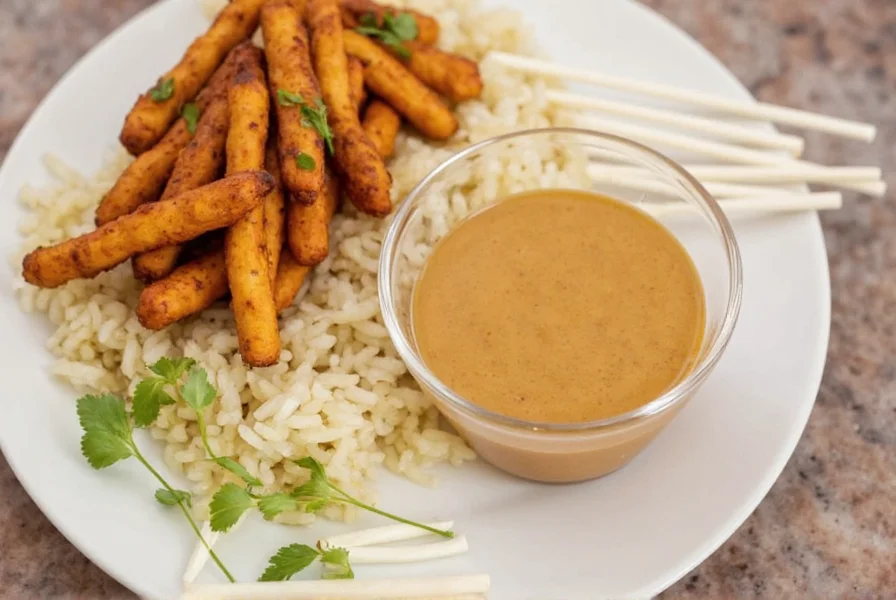
Step-by-Step Peanut Sauce Satay Recipe
Now that we've covered the essential components, let's walk through the process. This recipe makes enough for about 30 skewers or 4–6 servings depending on portion size.
Ingredients:
- 1 cup roasted unsalted peanuts
- 2 cloves garlic
- 1 tbsp grated ginger
- 1 tbsp tamarind paste
- 2 tbsp brown sugar
- 1 tsp chili powder (adjust to taste)
- 1 tsp ground cumin
- 1/2 tsp ground coriander
- 1 tbsp fish sauce or soy sauce
- 1/2 cup water or broth
Instructions:
- Toast the peanuts if not already roasted (in dry skillet for 5 minutes).
- In a blender or food processor, combine all ingredients except water.
- Blend until coarse, then slowly add water to reach desired consistency.
- Taste and adjust seasoning—add more sugar for sweetness, more chili for heat, etc.
- Transfer to a small pot and simmer for 10–15 minutes until thickened slightly.
Once cooled, store in an airtight container in the fridge for up to 5 days. Reheat gently before serving.
Global Variations of Satay and Their Signature Sauces
One of the joys of exploring satay is discovering how each region adapts it to their local tastes. Let's take a quick tour around the world:
| Region | Main Protein | Signature Sauce Style | Unique Ingredient |
|---|---|---|---|
| Malaysia (Satay Kajang) | Chicken or Lamb | Dark, smoky peanut sauce | Ketupat rice cake |
| Thailand (Satay Gai) | Marinated Chicken | Sweeter, coconut-infused sauce | Lemongrass marinade |
| Philippines (Satti) | Beef or Goat | Spicy, thinner sauce | Skewered with banana leaf |
| Indonesia (Satay Padang) | Offal (beef tongue/liver) | Yellow spicy sauce (not peanut-based) | Minangkabau spices |
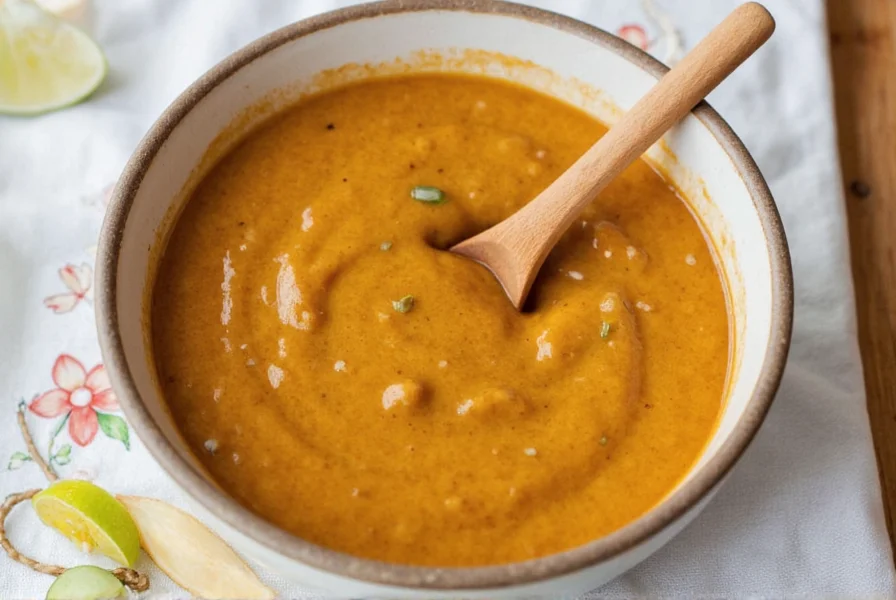
Each version reflects the local spice palette and cooking techniques, offering a delicious way to travel without leaving your kitchen.
Buying Guide: Best Tools & Ingredients for Homemade Satay
To bring authenticity and ease into your satay-making experience, here are some recommended tools and ingredient sources.
Top Picks for Peanut Butter Alternatives:
- Artisan Roasted Peanuts: Sold raw or lightly salted, these offer better control over flavor and texture. Ideal for grinding yourself.
- Organic Natural Peanut Butter: Look for no added oils or sugars. Great for shortcut versions of the sauce.
Recommended Kitchen Tools:
| Tool | Use Case | Recommended Brands |
|---|---|---|
| Cast Iron Skillet | Simmering peanut sauce evenly | Le Creuset, Lodge |
| Mini Food Processor | Blending smooth sauces quickly | Cuisinart Mini Prep, Hamilton Beach |
| Charcoal Grill | Authentic grilling for skewers | Weber, Char-Griller |
| Bamboo Skewers | Holds meat or vegetables securely | Reusables are preferred; disposable ones available at Asian markets |
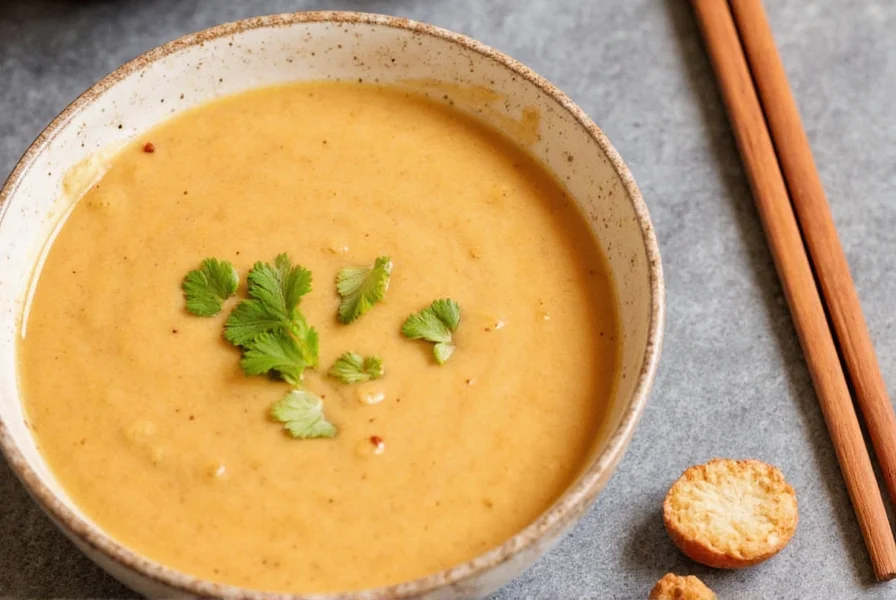
When selecting ingredients, prioritize freshness. If you're using pre-ground spices, ensure they are within six months of purchase for optimal potency.
Pro Tips for Making Authentic-Tasting Peanut Satay Sauce
Want your peanut sauce to stand out? Here are five insider tips:
- Toast Spices First: Lightly dry-roasting cumin and coriander seeds enhances aroma.
- Balance Sweet & Sour: Use tamarind and brown sugar in harmony for depth of flavor.
- Use Coconut Milk (Optional): For Thai-style richness, swirl in a splash during the final simmer.
- Simmer, Don't Boil: Keep the sauce at a low temperature to avoid separating or burning.
- Add a Splash of Lime: Right before serving, a few drops of lime juice brightens everything up.

Serving Suggestions: How to Present Your Satay Like a Pro
Satay isn't just about flavor—it's also a feast for the eyes. Here are ideas to elevate your plating game:
- Ketupat Rice Cakes: Serve alongside Indonesian-style ketupat for tradition and contrast.
- Cucumber Salad: A cool, crisp side balances the richness of the sauce.
- Cilantro Garnish: Adds freshness and visual appeal.
- Side Dipping Bowls: Offer extra peanut sauce in small bowls for dunking fun.
- Banana Leaf Plates: For an eco-friendly and traditional touch, especially when serving Filipino satti.
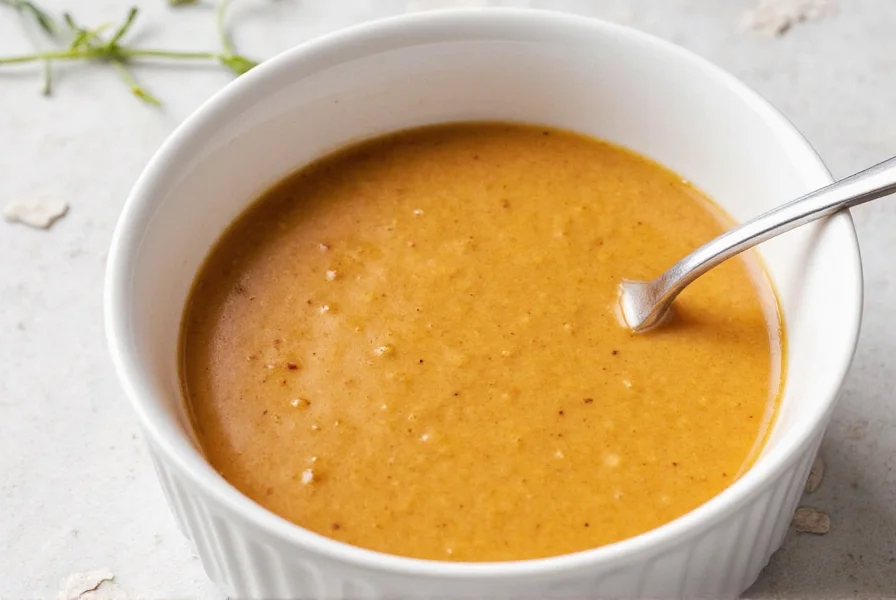
Frequently Asked Questions About Peanut Sauce Satay
How long does homemade peanut sauce last in the refrigerator?
Properly stored in an airtight container, homemade peanut sauce will keep for 5-7 days in the refrigerator. Make sure to cool it completely before storing and always use clean utensils when serving to prevent contamination. For longer storage, you can freeze the sauce for up to 3 months - just thaw in the refrigerator overnight before reheating.
Can I make this recipe without peanuts due to allergies?
Yes, you can substitute sunflower seed butter or tahini (sesame seed paste) for the peanuts. Sunflower seeds provide a similar nutty flavor profile without the allergen concerns. For tahini, you'll need to adjust the sweetness and acidity as sesame has a more pronounced bitter note. Almond butter also works well if tree nuts are acceptable, though it has a distinct flavor.
Why is my peanut sauce too thick or too thin, and how can I fix it?
Peanut sauce consistency depends on the liquid-to-solid ratio. If too thick, gradually add warm water, coconut milk, or broth one tablespoon at a time until desired consistency. If too thin, simmer longer to reduce, or add more ground peanuts. The ideal satay sauce should coat the back of a spoon but still drip slowly. Remember that the sauce will thicken slightly as it cools.
Can I use crunchy peanut butter instead of roasted peanuts?
While possible, we recommend using smooth natural peanut butter or freshly ground roasted peanuts for the best texture. Crunchy peanut butter will give your sauce a grainy consistency that's not traditional for satay. If using store-bought peanut butter, choose an unsweetened, no-additive version. For every 1 cup of roasted peanuts called for, substitute ¾ cup smooth peanut butter, and reduce added liquid accordingly.
What meats work best with this peanut sauce?
Traditional satay features chicken, beef, or lamb, but the sauce pairs well with almost any protein. Chicken thigh is particularly popular as it stays moist during grilling. For seafood satay, shrimp or firm fish like salmon work beautifully. Don't forget vegetarian options - tofu, tempeh, and mushrooms all absorb the flavors wonderfully. Regardless of protein, marinate for at least 2 hours for best results.
Is traditional satay sauce supposed to be spicy?
Spice levels vary significantly by region. Indonesian satay sauce tends to be milder, focusing on peanut and sweet notes, while Malaysian versions often include more chili. Thai satay sauce typically has medium heat balanced with coconut milk. The recipe provided offers adjustable spice - start with ½ teaspoon chili powder and increase to taste. Remember that the heat will mellow slightly when cooked, so it's best to season carefully and adjust at the end.
How can I make this recipe vegan?
To make this recipe vegan, substitute soy sauce or tamari for the fish sauce, and ensure your sugar is vegan (some brown sugars use bone char in processing). For authentic depth without fish sauce, add ½ teaspoon mushroom powder or a splash of vegan "fish" sauce. If using coconut milk, check that it's the plain variety without dairy additives. The rest of the ingredients are naturally plant-based!
My sauce separated - how can I fix it?
Separation usually happens when ingredients aren't properly emulsified or when adding cold liquid to hot sauce. To fix it: 1) Remove from heat immediately 2) Let cool slightly 3) Blend again in a food processor or blender until smooth 4) If needed, add a teaspoon of warm water while blending to help re-emulsify. Prevention is best - always add liquid gradually while the sauce is warm (not boiling), and maintain a gentle simmer rather than a rolling boil.
A Brief History of Satay and Its Global Influence
Satay, the grilled meat skewer served with a side of rich, savory peanut sauce, has roots tracing back centuries across Southeast Asia. While its exact origin is debated, many point to Java (Indonesia) or Malaysia as its birthplace. Over time, satay spread throughout Asia and beyond, evolving with local spices and culinary practices.
In Thailand, satay became spicier and often includes coconut milk in the marinade. In the Philippines, it's known as satti and comes in unique variations like goat or chicken. Today, satay can be found from street carts in Bangkok to fine dining restaurants in New York.
Final Thoughts: Satay as a Culinary Bridge Across Cultures
The journey of satay—from humble origins in Indonesia to global fame—is a testament to the power of food to unite people. With this peanut sauce satay recipe, you now have the tools to recreate that magic at home.
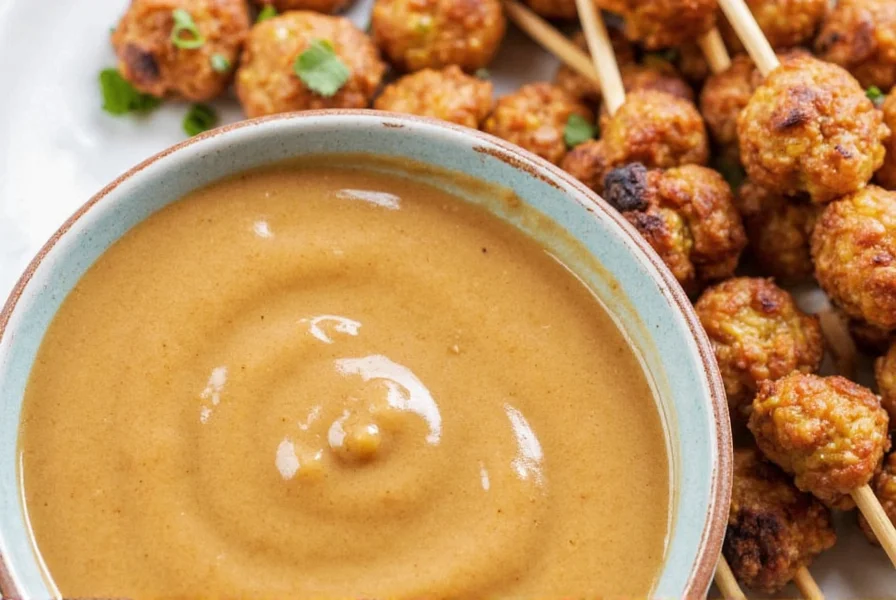
Whether you stick to a classic version or explore regional twists, every bite tells a story. So fire up the grill, blend that peanut sauce with love, and enjoy your own little taste of global spice tradition—one skewer at a time.

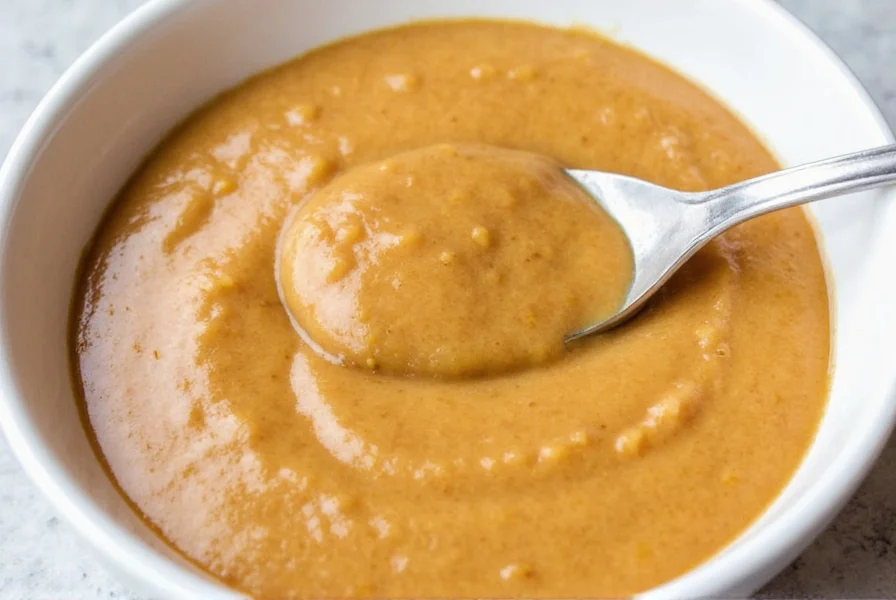









 浙公网安备
33010002000092号
浙公网安备
33010002000092号 浙B2-20120091-4
浙B2-20120091-4